Virginia State Capitol
Introduction
Text-to-speech Audio
Designed by Thomas Jefferson and in operation since 1788, this is the oldest state capitol in the United States and even predates the United States Capitol in Washington. The capitol building is the 8th home of Virginia's government which began in the colonial era with the establishment of the House of Burgesses in 1619. This building also served as the Capitol of the Confederacy during the Civil War. Capitol Square includes monuments and statues honoring Virginians such as George Washington, Thomas Jefferson, Patrick Henry, John Marshall, Stonewall Jackson. Newer statues honor leaders of the Civil Rights Movement such as Barbara Johns.
Images
The Capitol is home to the longest continuously-operating state legislature in the Americas.
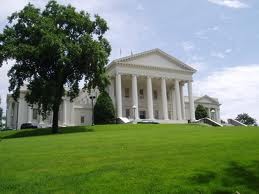
Richmond's Unhealed History by Benjamin Campbell-Click the link below for more information
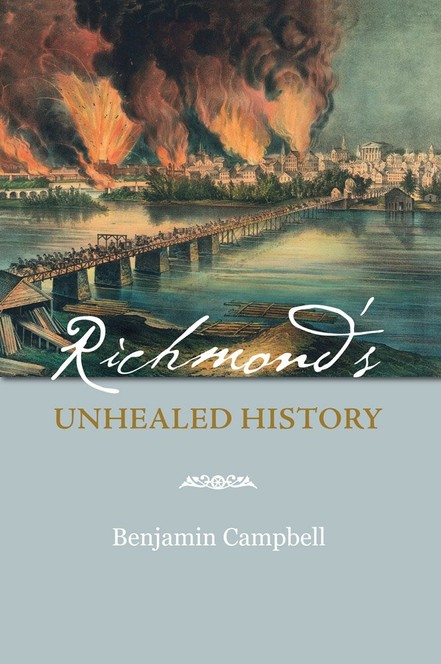
Drawing of the capitol as it looked in 1802. Courtesy of Lawrence Sully. Digital reproduction of wood engraving. Published in Virginia & North Carolina Almanack 1802.
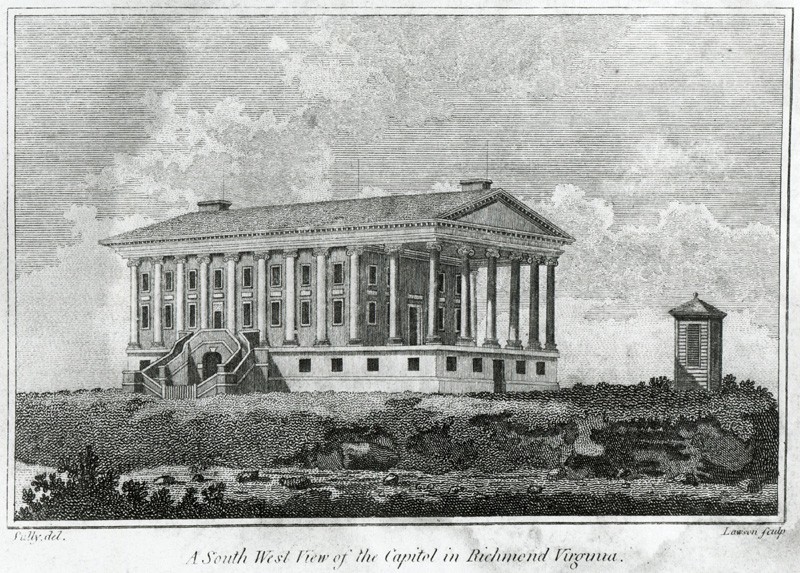
Another drawing, circa 1790-1800. Courtesy of Getty Images Archive Photos
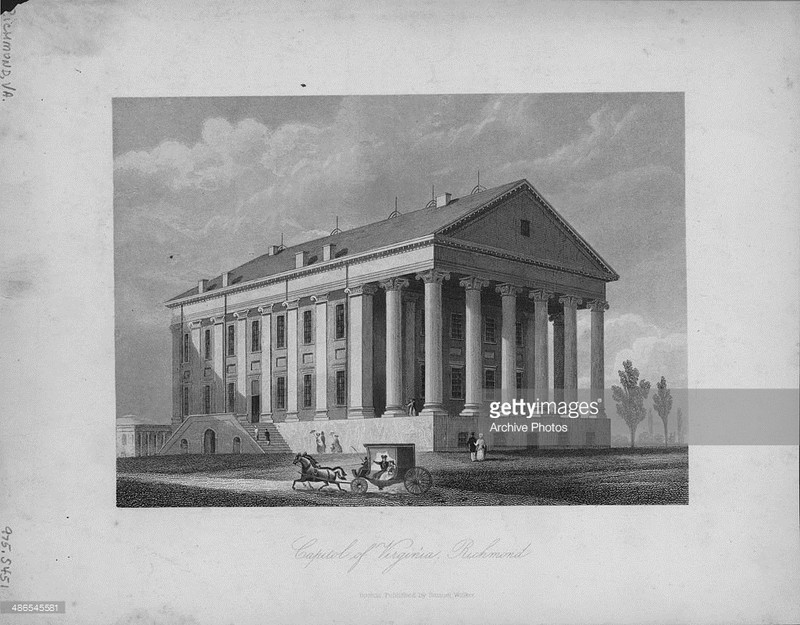
One of Jefferson's original plans for the capitol
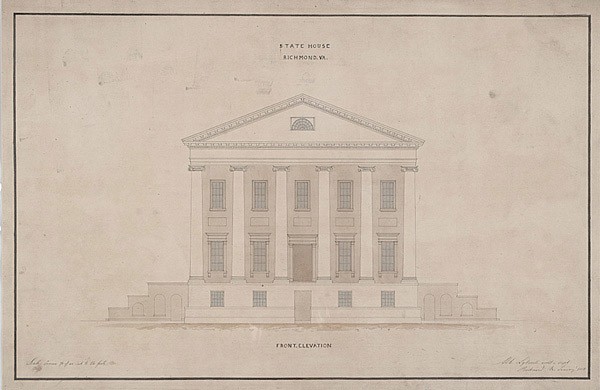
The capitol in 1865, Union soliders stand in front.
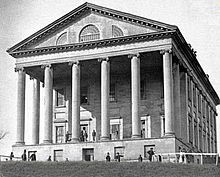
The capitol building was featured in Confederate Currency, such as this 1864 $5 bill
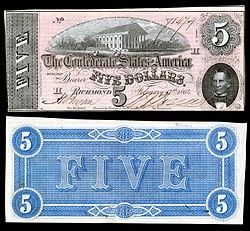
Ariel view of the capitol as it looks today
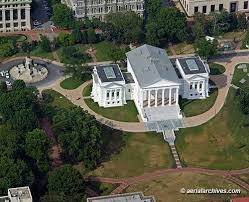
Backstory and Context
Text-to-speech Audio
After Richmond was made the capitol in 1780, it was found that Richmond needed a permanent capitol building. Thomas Jefferson was the primary architect. He used the Maison Carree as the inspiration for the building, creating the first recreation of a classical temple on American soil. Construction began in 1785 and continued until it was functional until 1792. The Capitol building is notable because, unlike most of Jefferson's designs and many state buildings in America, it does not include a dome of any kind. This building also served as the Capitol of the Confederacy from 1861-1865.
On April 27th, 1870 tragedy struck the Capitol. The original courtroom was on the second floor of the Capitol building and was a single level. As Richmond grew, they found it was necessary to create a galley above the courtroom floor for spectators. This construction was done hastily. On the morning of April 27th a large crowd had gathered to for a mayoral contestation. Without warning, the galley floor gave way falling into the center of the courtroom. The weight from the fall caused the courtroom floor to collapse onto the Hall of Delegates. Over 60 people were dead at the scene and 130 were wounded. Soon after the tragedy the public called for the Capitol to be demolished as it was unsafe.
The building underwent serious renovations from 1870 to 1904. Two wings were added to the original building so there would be room for growth. In 2003 Virginia worked to restore the building and bring it up to modern building compliances.
The grounds of the Capitol include several statues that continue to attract large numbers of visitors each year. In 1869, the largest of these monuments were completed--a number of monuments to Virginia's leading members of the Revolutionary and early national period. A statue of George Washington stands at the center of these statues, flanked smaller figures of Patrick Henry, Thomas Jefferson, Andrew Lewis, John Marshall, George Mason, and Thomas Nelson Jr.
While these statues reflect the immediate post-war desire to memorialize Virginia's role within the founding of the nation, pro-Confederate sentiment returned to the forefront during the final years of Reconstruction. In 1875, a statue commemorating "Stonewall" Jackson was added to the grounds--an act that would have been unthinkable just ten years prior.
The most recent additions further demonstrate the ways that historic commemoration reflects contemporary values and beliefs. In 2008, the state dedicated the Virginia Civil Rights Memorial. More recently, state leaders launched an effort to create a memorial related to the role of women within Virginia's history.
On April 27th, 1870 tragedy struck the Capitol. The original courtroom was on the second floor of the Capitol building and was a single level. As Richmond grew, they found it was necessary to create a galley above the courtroom floor for spectators. This construction was done hastily. On the morning of April 27th a large crowd had gathered to for a mayoral contestation. Without warning, the galley floor gave way falling into the center of the courtroom. The weight from the fall caused the courtroom floor to collapse onto the Hall of Delegates. Over 60 people were dead at the scene and 130 were wounded. Soon after the tragedy the public called for the Capitol to be demolished as it was unsafe.
The building underwent serious renovations from 1870 to 1904. Two wings were added to the original building so there would be room for growth. In 2003 Virginia worked to restore the building and bring it up to modern building compliances.
The grounds of the Capitol include several statues that continue to attract large numbers of visitors each year. In 1869, the largest of these monuments were completed--a number of monuments to Virginia's leading members of the Revolutionary and early national period. A statue of George Washington stands at the center of these statues, flanked smaller figures of Patrick Henry, Thomas Jefferson, Andrew Lewis, John Marshall, George Mason, and Thomas Nelson Jr.
While these statues reflect the immediate post-war desire to memorialize Virginia's role within the founding of the nation, pro-Confederate sentiment returned to the forefront during the final years of Reconstruction. In 1875, a statue commemorating "Stonewall" Jackson was added to the grounds--an act that would have been unthinkable just ten years prior.
The most recent additions further demonstrate the ways that historic commemoration reflects contemporary values and beliefs. In 2008, the state dedicated the Virginia Civil Rights Memorial. More recently, state leaders launched an effort to create a memorial related to the role of women within Virginia's history.
Sources
Virginia State Capitol History Project http://www.vacapitol.org/
